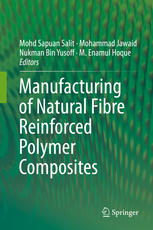

Most ebook files are in PDF format, so you can easily read them using various software such as Foxit Reader or directly on the Google Chrome browser.
Some ebook files are released by publishers in other formats such as .awz, .mobi, .epub, .fb2, etc. You may need to install specific software to read these formats on mobile/PC, such as Calibre.
Please read the tutorial at this link: https://ebookbell.com/faq
We offer FREE conversion to the popular formats you request; however, this may take some time. Therefore, right after payment, please email us, and we will try to provide the service as quickly as possible.
For some exceptional file formats or broken links (if any), please refrain from opening any disputes. Instead, email us first, and we will try to assist within a maximum of 6 hours.
EbookBell Team

5.0
28 reviewsNatural fibre composite is an emerging material that has great potential to be used in engineering application. Oil palm, sugar palm, bagasse, coir, banana stem, hemp, jute, sisal, kenaf, roselle, rice husk, betul nut husk and cocoa pod are among the natural fibres reported to be used as reinforcing materials in polymer composites. Natural fibre composites were used in many industries such as automotive, building, furniture, marine and aerospace industries. The advantages of natural fibre composites include low cost, renewable, abundance, light weight, less abrasive and they are suitable to be used in semi or non-structural engineering components. Research on various aspects of natural fibre composites such as characterization, determination of properties and design have been extensively carried out. However, publications that reported on research of manufacture of natural fibre composites are very limited. Specifically, although manufacturing methods of components from natural fibre composites are similar to those of components from conventional fibre composites such as glass, carbon and Kevlar fibres, modification of equipment used for conventional fibre composites may be required. This book fills the gap of knowledge in the field of natural fibre composites for the research community. Among the methods reported that are being used to produce components from natural fibre composites include hand lay-up, compression moulding, filament winding, injection moulding, resin transfer moulding, pultrusion and vacuum bag moulding. This book is also intended to address some research on secondary processing such as machining and laser welding of natural fibre composites. It is hoped that publication of this book will provide the readers new knowledge and understanding on the manufacture of natural fibre composites.